Balloon Flower Care and Growing Tips
Updated: Apr. 10, 2024
Blueish-purple balloon flower is well suited for growing in almost any garden. This pretty perennial needs little care to thrive.
On This Page
How to Grow Balloon Flower
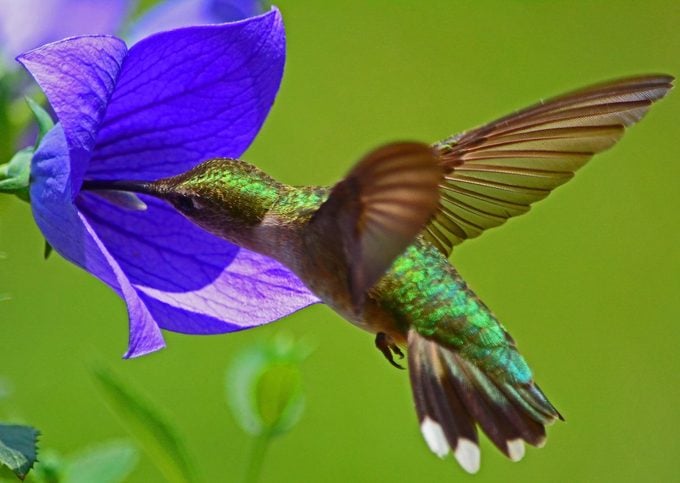
- Common name: Balloon flower, Chinese bellflower, Japanese bellflower
- Scientific name: Platycodon grandiflorus
- Hardiness zones: 3 to 8
- Light needs: Full sun to part shade
- Watering needs: Consistently moist, not wet
- Preferred soil: Well-draining, moist soil
- Size: 1 to 2 feet tall, 1 to 1 1/2 feet wide
- Pollinators: Bees and butterflies
Although the Latin botanical names are the best way to talk about flowers, since common names vary so widely, some common names are still a lot of fun and definitely worth knowing. Balloon flower (Platycodon grandiflorus) is a great example. Once you see one of these plants covered in balloon-shaped buds and getting ready to burst into bloom, you’ll know exactly where the common name came from. These plants are a great choice for your cottage garden.
Are Balloon Flowers Perennials?
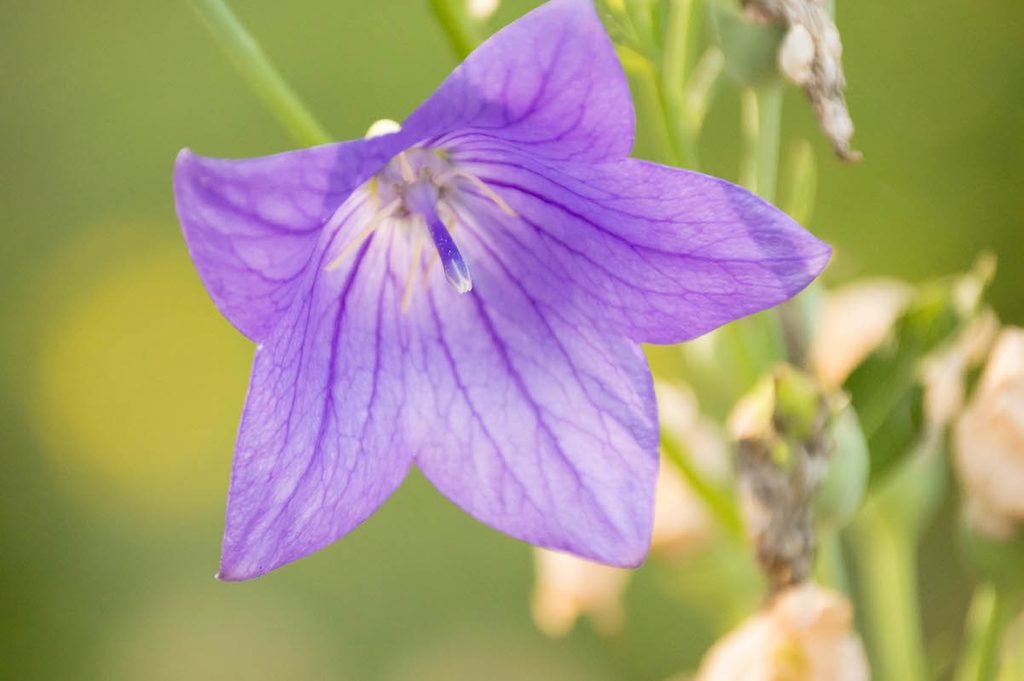
These clump-forming perennials are members of the low-maintenance bellflower family of plants. Growing balloon flower is really quite easy; it will thrive in almost any garden and is hardy down to zone 3.
Where to Plant Balloon Flower
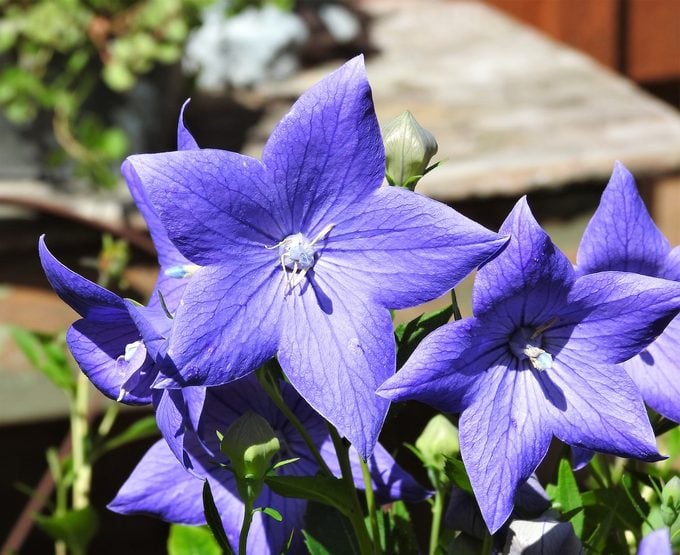
For the most blooms, plant balloon flower in locations with part to full sun with proper drainage says Jen McGuinness, author of Bird-Friendly Gardening: Guidance and Projects for Supporting Birds in Your Landscape. “I grow pink balloon flower in my front garden in soil that drains quickly after it rains. It is interplanted with bearded irises and daylilies in a part sun location.”
A bit of afternoon shade can help the plant withstand the hottest summer weather.
In colder zones, the plant dies back to the ground in the winter. It’s often one of the later perennials to emerge in the spring, so you probably will want to mark the spot somehow so you don’t plant over it or accidentally weed it out. And choose that spot wisely—balloon flower doesn’t like to be transplanted or divided due to its fragile fleshy root system.
“The plant is slow to emerge in the spring, so be sure not to accidentally remove it when the garden season kicks off. It does best in a spot where it won’t be moved. I’ve had mine for several years!” Jen says.
For more blue beauty, grow delphinium in your flower garden.
When to Plant Balloon Flower
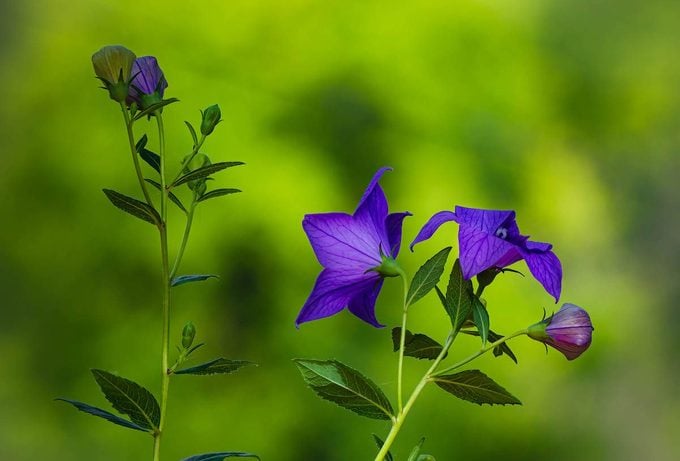
If you want to start with a packet of seeds, remember that you might not get blooms the first year. Some varieties and those started early enough indoors may flower the same year. It’s easier if you start with plants from your local garden center. Add them to your flower beds in spring after the threat of frost has passed.
They should begin blooming in mid- to late summer, and will continue producing flowers with regular deadheading. That’s basically all the care they’ll need, though. Deadheading will also prevent the plants from self-seeding and spreading.
If you want to save the seeds, wait until the pods turn brown and dry completely, then pop them open into a paper bag. Direct sow the seeds into your garden the following spring.
Watering Needs
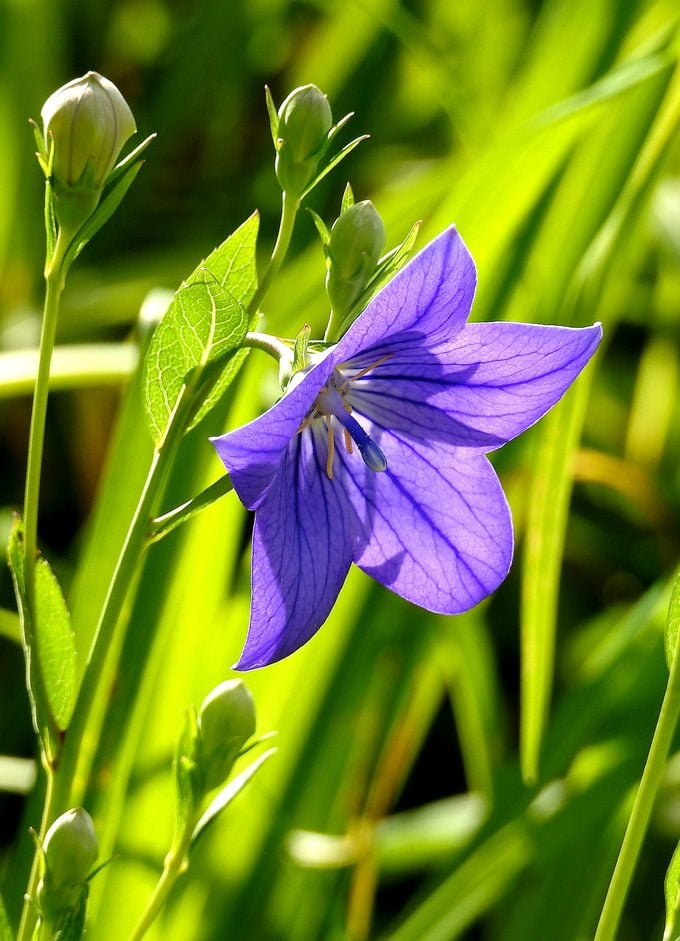
New plants need regular watering while getting established in the garden, but then they are fairly drought tolerant and disease resistant.
Can You Grow Balloon Flower in Containers?
The plants grow well in large containers as long as the pot is deep enough to accommodate the plant’s long fleshy roots; 10 to 12 inches is usually deep enough. Make sure the container you choose has a drainage hole so the potting mix doesn’t get soggy.
Best Varieties to Grow
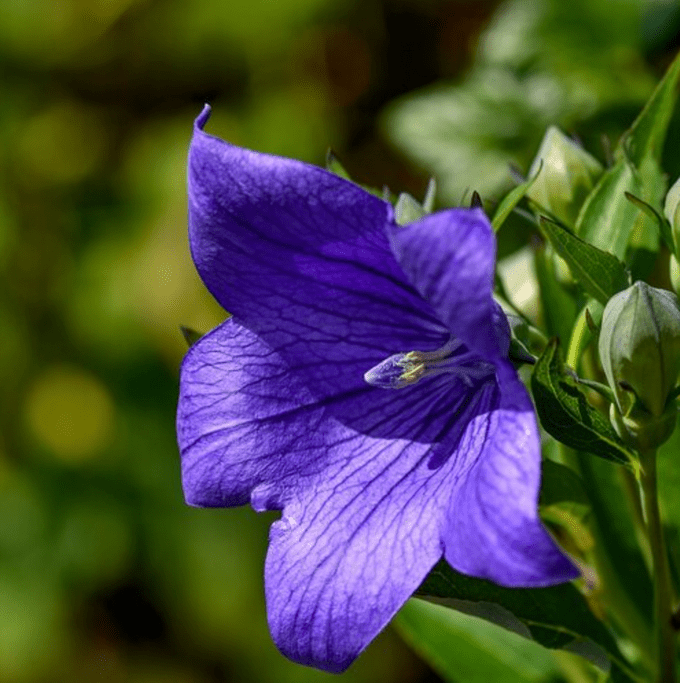
The most common blooms are in shades of blue, but pink and white flowering varieties are available, too. Recommended blue-violet blooming varieties include ‘Astra Blue,’, ‘Fuji Blue,’ and ‘Sentimental Blue.’
In most conditions, balloon flower will grow up to 2 feet tall; look for dwarf varieties for smaller gardens and containers.
“The pink balloon flower is shorter in size than some of the blue varieties, so it does well along the garden path as an edging plant. It starts to bloom in early summer,” says Jen.
Wildlife Benefits
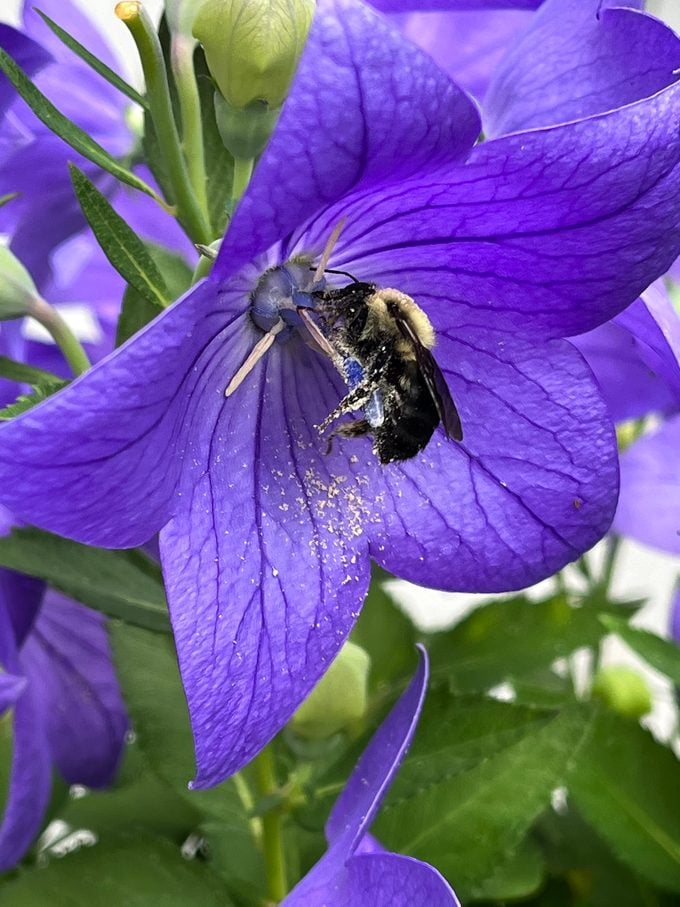
The colorful flowers attract bees and butterflies and other pollinators, including hummingbirds, but deer typically leave these plants alone.
“Balloon flower is a perennial favorite of mine. Bees love it, and it deadheads easily. Plus, it will bloom nearly all summer and into a warm fall,” says Birds & Blooms reader Susan Steele of Livonia, Michigan.
About the Expert
Jen McGuiness is the author of the recently released gardening book, “Bird Friendly Gardening: Guidance and Projects for Supporting Birds in Your Landscape,” published by Cool Springs Press/Quarto Knows.
Sources
- White Flower Farm – Balloon flower
- Drought-Tolerant Plants for the Conscientious Gardener – Research Guides at New York Botanical Garden
- Proven Winners
- Monrovia
- Walters Gardens
- University of Illinois-Extension – Balloon flower
Why Trust Us
For nearly 30 years, Birds & Blooms, a Trusted Media Brand, has been inspiring readers to have a lifelong love of birding, gardening and nature. We are the #1 bird and garden magazine in North America and a trusted online resource for over 15 million outdoor enthusiasts annually. Our library of thousands of informative articles and how-tos has been written by trusted journalists and fact-checked by bird and garden experts for accuracy. In addition to our staff of experienced gardeners and bird-watchers, we hire individuals who have years of education and hands-on experience with birding, bird feeding, gardening, butterflies, bugs and more. Learn more about Birds & Blooms, our field editor program, and our submission guidelines.


